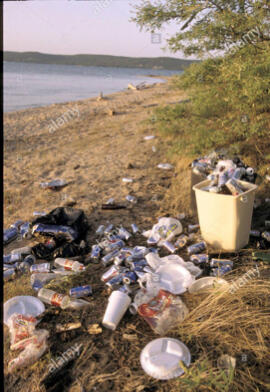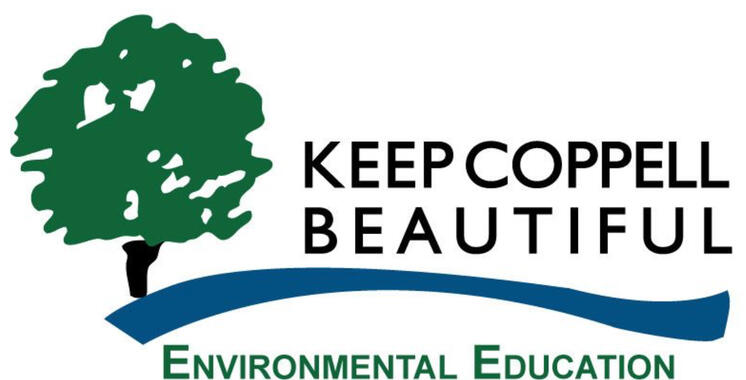
Waste and Sanitation
Click To Learn More and Follow the Journey! ^
Challenge
To improve someone's life with better living conditions
Purpose
Our Senior Capstone Project is to make a greener and cleaner environment to live in!
Issue
Waste and Sanitation in the DFW Area
Problem
Problem Statement:
Our Problem is focusing on the trash in lakes in Coppell which makes the water quality bad and allows for diseases and viruses to thrive. We are specifically focusing on the WestNile Virus in Texas. We want to focus on doing our part to clean the lakes and have a campaign to make sure others will not be part of the problem because having dirty lakes leads to clusters of mosquitoes and spreads diseases. Trash in lakes also interferes with human uses of river, marine and coastal environments like lack of fish, and not being able to participate in many recreational activities. We also want to plan for the future to prevent it from continually happening, but we are also dealing with the present. We have though about why this happens and are also looking to investigate what people's mindsets are on the cleanliness of the neighborhoods.
Why Does The Team Care About This Problem?
We decided to look into this problem because trash build up is a big problem in the surrounding lakes; the water moves throughout the town and into the communities surrounding it, creating a flow of waste in the county. Having still, dirty water also contributes to more clustered bugs and mosquitos which spreads diseases and is not very clean and sanitized. Since our team is working on Waste and Sanitation for our problem theme, we decided this problem addressed both and would be sufficient to work on.
Research
(click to learn more)
Identification and Definition of the Problem
Who does the problem affect? Specific groups, individuals, organizations, etc. Determine a single individual that you can identify and tell their story.
Personal Stories

Donnie Manry
Fourteen years ago, he became ill with what he thought was a common case of the flu.
“I started feeling sick, flu-like symptoms. Headache, a sore neck, kind of fevery, flu-like symptoms, and that started over one day and progressed over six days, and basically by the sixth day, I was paralyzed and couldn’t walk,” said Manry.
To this day, he still uses a mobility device.
The problem affects those who are easily susceptible to viruses and mosquito bites.
Specific Groups mentioned by the CDC include Outdoor Workers, Those who are Pregnant and Nursing, and Transplant Recipients (especially blood transfusions).
Amanda Young
In July of 2013, started having severe headaches and fevers and was diagnosed from a neurologist with West Nile virus. She had the diseasefor almost a month.
Three years later, she still is battling the side effects of the disease as it has attacked her autonomous nervous system and has had stomach problems because of gastroparesis (paralysis of the stomach).
She struggles with the daily reminders of this disease and how it has changed her life; she longs for enough energy to live each day fully.
Charlie Gibbs
“Doctors aren’t sure what to make of Gibbs’ mysterious symptoms. They check for heart attack, stroke and even the relatively rare Guillain-Barré Syndrome.”
“Then a blood test reveals the true villain—a tiny mosquito bearing a terrifying virus. “I was the first person infected with West Nile virus (WNV) in Mississippi,” Gibbs says. “Aren’t I lucky?””
“After doing an exhaustive series of tests on Gibbs and two other paralyzed West Nile patients, the researchers became the first in the world to report that WNV can target the motor neurons of the spinal cord, causing muscle weakness, fatigue and a polio-like paralysis.”
The problem of trash in lakes contributing to WestNile Virus in Texas. The DFW area is an active spot of the virus and since the lakes here are huge masses of standing water, this is especially dangerous as the virus spreads through mosquitoes who thrive in that type of environment.
When the issue is fixed locally, those in the immediate area surrounding and those who visit the lakes will not have to worry about or even get close to contracting the virus from those specific lakes and they can stay healthy
If the issue continues to stay and isn’t fixed, we will have to suffer with the dire consequences of rapid spread of the West Nile virus in the DFW area and continue to lose more lives to the disease. The virus is spread through the bite of an infected mosquito and to reduce the risk of getting it, the Texas Human and Health Services recommends preventing mosquito bites by removing standing water and mosquiot repellents. If there is standing water that cannot be removed, the CDC recommends to sanitize and clean the water regularly.
What are the boundaries of the problem, e.g. organizational, workflow, geographic, economic, segments, etc. - What is the issue? - What impact is the issue causing? - What will happen when it’s fixed? - What would happen if we didn’t solve the problem? This is not the pace for opinions. Extrapolate out the expected results based on research and expert guidance.
When does the issue occur? - When does it need to be fixed?
This issue occurs in the warmer months of the year, so summer and early fall. However in some areas of Texas it is usually always warm so West Nile can be a risk year round. A solution should be fixed or found by early May.
This issue occurs at swampy lakes and standing water. As of right now DFW area is one of the most prominent affected counties in Texas with multiple cases of the disease in humans. Places without a system of distribution for clean water also have increased risk, i.e. rain barrels or pools.
Where is the issue occurring? Only in certain locations, processes, products, etc.
Justification of the Problem
The uncleanliness of the lakes causes the spread of diseases through bug transfer and air.
Because the lakes connect the entire town, diseases and problems can travel throughout easily.
Also, a good amount of Coppell residents either live on or near the lakes, or spend time around them (the lakes continue on through into the public parks and run next to roads and sidewalks).
Susceptible to West Nile fever through the transfer of mosquitoes, which tend to be attracted towards waste and trash.
Lakes can become impaired with pollution.
Impact (What are the negative impacts this problem has on the people or community?)

Stakeholders (Who are the other stakeholders?)

CDC
https://www.cdc.gov/westnile/index.html
City of Coppell Environmental Health Division
http://www.coppelltx.gov/government/departments/environmental-health
Coppell Parks and Recreation Department
http://www.coppelltx.gov/government/departments/parks-recreation
Stormwater management program (http://www.coppelltx.gov/government/departments/engineering/stormwater-management)
Prior Solutions
Results: West Nile fever still reported in 36 states with around 81 cases, Reduce the discharge of pollutants to the maximum extent possible, Protect water
quality, Satisfy the appropriate water quality requirements of the Clean Water Act
Prevention of Mosquito bites through insect repellant, wearing long-sleeved shirts and pants, treating clothing and gear, integrated mosquito management (IMM) or integrated vector management (IVM)
Stormwater Management Plan (SWMP)
Public Education, Outreach and Involvement, Illicit Discharge Detection and Elimination, Construction Site Stormwater Runoff Control, Post-Construction Stormwater Management in New Development and Redevelopment, Pollution Prevention/Good
Housekeeping for Municipal Operations
Clean Water Act
The National Pollutant Discharge Elimination System (NPDES)
Texas Pollution Discharge Elimination System (TPDES)
Impact (What impact does it have on the stakeholders?)
The transfer of a disease, especially a deadly virus such as West Nile, is very dangerous for a town such as Coppell.
West Nile and other mosquito-led viruses become rampant near the start of summer and through summertime, which provides for a lot more problems, as most Americans spend their summer vacation outside, near a body of water (Pool, lake, etc.)
Coppell is the only county with positive hot-zones, and if this problem is not contained before next summer, cases could become even more rampant.
Timeframe: What is the immediacy of the problem? Be specific. Is this something that must be solved now or is this something that has been going on for a while.)
Define “Stakeholder” and “Parameter” here. Understanding these terms will be critical for getting good information
Stakeholder:
A person of interest with resources and knowledge that is in accordance to a certain project or business
Parameter:
Guidelines that are set in place to define the scope of a particular project or activity
Parameters(What necessary design parameters must be accounted for?)
When we begin our attempt to solve this problem, we have to be mindful of the health of the residents of Coppell, as well for the lakes
Because the virus begins around the beginning of the summer, we have to make sure that the design gets implemented or begins around that time for maximum effectiveness.
Documentation and Analysis of Past and Current Solution Attempts
Past Attempts
Sanitation departments and wastewater treatment plants remove organic wastes and treat water with chlorine or other disinfectants. These activities may decrease mosquito population by getting rid of the organic matter and waste that is idle in these standing waters.
The CDC says that the best way to prevent West Nile Virus is to prevent mosquito bites, they provide a list of effective sprays and repellents. They also mention general behaviors that would be of benefit to you.
The Clean Water Act is a federal law that regulates the discharge of pollutants into the nation’s surface waters, including lakes, rivers, streams, wetlands, and coastal areas. The law was passed in 1972, amended in 1977 & 1987 and is still enforced today by the EPA.
The city of Coppell has deployed 6 routes throughout the town that will be targeted to attempt to trap the mosquitoes in these areas, they start these routes every spring,
The City of Coppell also has put out many flyers and information that allows people to educate themselves on how to avoid the breeding of mosquitoes in their own home, they mention standing water and various places that could be hotspots for mosquitoes.
Current Attempts
Analysis (Why the attempts were unsuccessful)
Strengths:
Most of these solutions are viable and good at preventing the spread of the diseases that are spread via mosquitoes. They are cost effective and do a good job of informing people on how to do their part in preventing the spread.
Shortcomings:
The solutions that have been put in place so far focus on preventing the spread of the viruses, instead of trying to prevent the breeding of the insects that spread the virus. In the cases that they do focus on the prevention of mosquito breeding, they simply put out information and hope that other people do it in their own homes. The City of Coppell has not mentioned anything about sanitizing the standing waters in the city.
Goals, Parameters and Constraints derived from previous Elements
Goals
Reducing cases of West Nile virus in Coppell by at least 2%Cleaning up water sources in the town (Coppell)The design we create has to withstand the currents of the lakes and cannot be affected by water or wetness (waterproof covering of the system)The design has to either be simple to understand and pick up on or is similar enough to the past and current systems that it is easy to implement
Parameters
Cannot affect the health or well being of Coppell residents, no chemicals in the water or micro plastics that could cause harmLake in Andrew Brown Park West (the big one)Cannot mess with the natural environment or surroundings of the parks, no digging or taking away from the landscape
Constraints
Limited Budget (about $100), students will contribute $20 each maximum, plus the cardboard that we were pre-given to use for prototypingTime Limit of project (ends May of 2021)Season of disease (West Nile is most active during the summer)Make sure not to mess with or destroy the local wildlife that may live in or near the lakesPermitted access (testing area), Approval from Coppell Parks and Recreation by December 2020